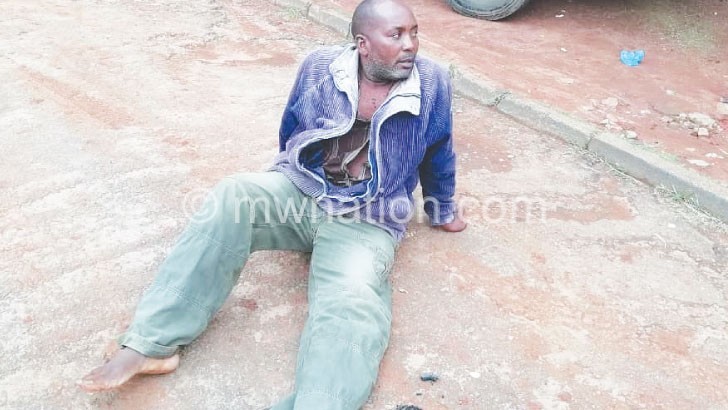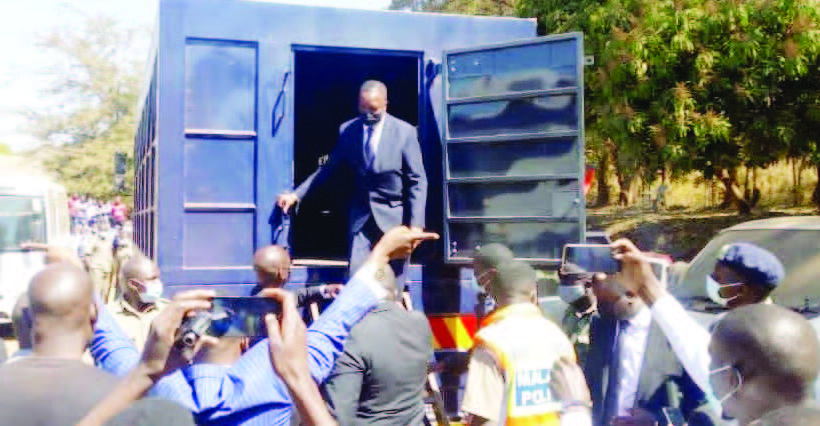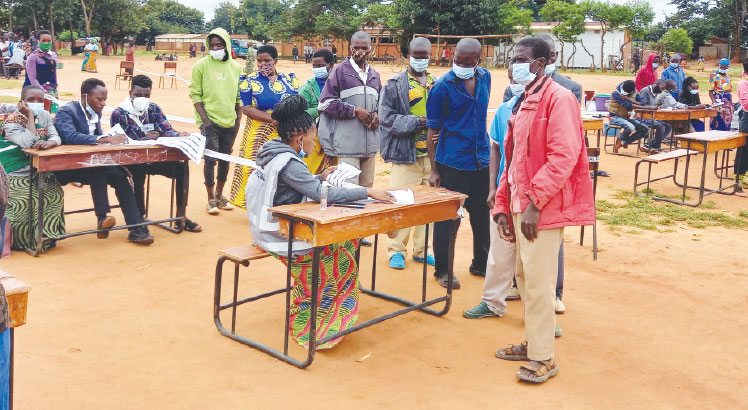Suspect Lule killed—report
A forensic autopsy report issued by an independent pathologist Charles Dzamalala yesterday shows Buleya Lule, a suspect in the abduction of a boy with albinism, died from electrocution.
This is in contrast to an earlier autopsy commissioned by Malawi Police Service (MPS) which claimed Lule had died of natural causes.

The Association of Persons with Albinism in Malawi (Apam) has since demanded immediate action from the Police Inspector General Rodney Jose, failing which they will take to the streets on April 30.
Lule was one of the suspects in the abduction of 14-year-old Goodson Makanjira, a boy with albinism from Dedza. He allegedly offered to buy the boy, who is still missing, for K800 000. The suspect died in the hands of police after he appeared in court once, where he denied the charge.
In the seven-page autopsy report, Dzamalala states that the results show a “microscopically proven electrocution wound over abdomen”, and that the deceased was also assaulted.
Reads the report in part: “While electrocution is the primary cause of death in this instance, it was abundantly clear that the deceased was also assaulted with different types of implements, including but not limited to a cylindrical object inflicting trauma to the head and probably also a hot iron or similar object placed on a cloth over the skin rather than directly onto the skin around the left buttock.”
In the report, Dzamalala acknowledges that an initial autopsy at Kamuzu Central Hospital was conducted by Dr Maurice Mulenga, a pathologist based at the same institution.
“Whether Dr Mulenga issued an autopsy report (written or verbal) at the end of the autopsy in the mortuary remains unclear, but media reports after that autopsy indicated intracranial bleeding and hypertension as the cause of the death,” he observes.
After the first autopsy on February 21 2019, Deputy Inspector General of Police Duncan Mwapasa is on record as having said the report on the cause of Lule’s death showed that he died of hypertension and that a second autopsy was commissioned because some quarters were not convinced of the first report.
It is this second, and official autopsy that contradicts the police version as stated in February.
The Dzamalala report agrees with the initial one in that it confirms “evidence of diffuse haemorrhage into the subdural space most porobably best seen/demonstrated during the first autopsy.”
The nature and types of the injuries seen, states Dzamalala, constitute torture by World Medical Association (WMA) standards.
“No evidence of any fatal natural disease process such as a hypertensive crisis, as alleged in some media circles, was seen during the autopsy and also microscopically,” adds the report.
Apam and Human Rights Defenders Coalition (HRDC) have since demanded answers on why Lule was killed.
Apam president Overstone Kondowe said the report confirms their fears on the existence of an invisible hand in cases involving people with albinism (PWAs).
He said: “This was a third death of a suspect and we wondered why human rights bodies and government were quiet on these suspicious deaths. So we are saying, let the IG act on the report within 10 days.”
Two others, Donald Msafiri—a suspect in the abduction of 18-month-old Eunice Nkhonjera, a PWA in Karonga and Joseph Andiwotchi, a suspect in the abduction of Ibra Pilo, a two-year-old PWA in Machinga, mysteriously committed suicide.
Kondowe also said police officers who were in charge on the night of Lule’s death should answer charges.
“We want to know who did what and under whose instruction. We need an independent investigation because police themselves cannot do a thorough investigation on this,” he said.
If the IG defies the order, Kondowe said Apam will mobilise its membership to the streets on April 30 2019.
HRDC deputy chairperson Gift Trapence, whose institution earlier wrote Police Service Commission to arrest officers involved, said they demand immediate arrest and prosecution of involved police officers.
“HRDC expects the police not to shield fellow officers implicated in the case, rather to cooperate with the law. We want to know why they killed him. Were they failing to break him, or they were trying to shut him up? Who sent them?” he said.
Malawi Police national spokesperson James Kadadzera said in an interview they were yet to receive official communication on the same and “will respond accordingly once we have received it.”
Earlier, he said the outcome of the autopsy report will determine the course of action the police will take, promising the police will offer any support to ensure that the truth prevails on the matter.
Minister for Homeland Security Nicholas Dausi said in a separate interview he would not comment on the matter as he, too, was yet to see the autopsy report.
Malawi Human Rights Commission (MHRC) executive secretary David Nungu, whose institution commissioned the inquest, also said he was yet to get the report and would, therefore, not comment.
On her part, Ombudsman Martha Chizuma, who is also a MHRC commissioner, said the commission did not request Dzamalala to conduct the autopsy as a one off event.
“As you may be aware, the commission is currently doing a much wider investigation into the circumstances surrounding the death of Buleya Lule whilst in police custody.
“We are at quite an advanced stage with this investigation and all things being equal we hope to release our report on the same pretty soon. The autopsy report is supposed to feed into this wider investigation. So I guess on your other questions you just have to wait for the report of this wider investigation by the commission,” she said.
Meanwhile, Dzamalala has dared the police on DNA testing, stating that discreet samples to enable the search for foreign DNA on the body were taken from key focal areas on the body through use of dry swabs.
“These sites were key wound areas. As this was a second opinion autopsy, the usefulness and validity of the DNA yield from these samples remain speculative.
“However if the police bring forward suspects in this case, for possible DNA matching, an attempt will be made to undertake this testing through Lancet Laboratories of South Africa,” he stated.
Police arrested six men in connection with the abduction of the teenage boy and have since charged them with abducting to murder contrary to Section 261 of the Penal Code and unlawful wounding contrary Section 24 of the Penal Code.
The six, including the deceased, are Kumbilani Patson, 51, (1st accused), 2nd accused Sainani Kalekeni, 44, 3rd accused Lukas Kagomo, 36, 4th accused Katiya Mizeck, 42, 5th accused Buleya Lule, 44, and Wiskes Gana, 58, the 6th accused.
Buleya pleaded not guilty to the charges and denied accusations by Patson and Kalekeni that he knew the market for persons with albinism and that they gave him the boy alive. n





